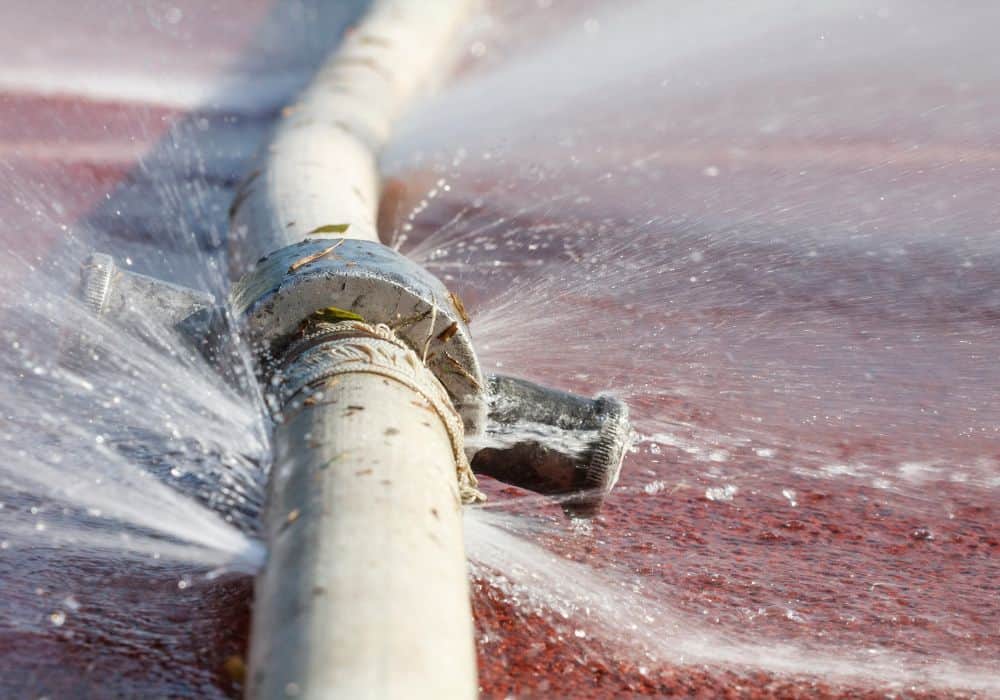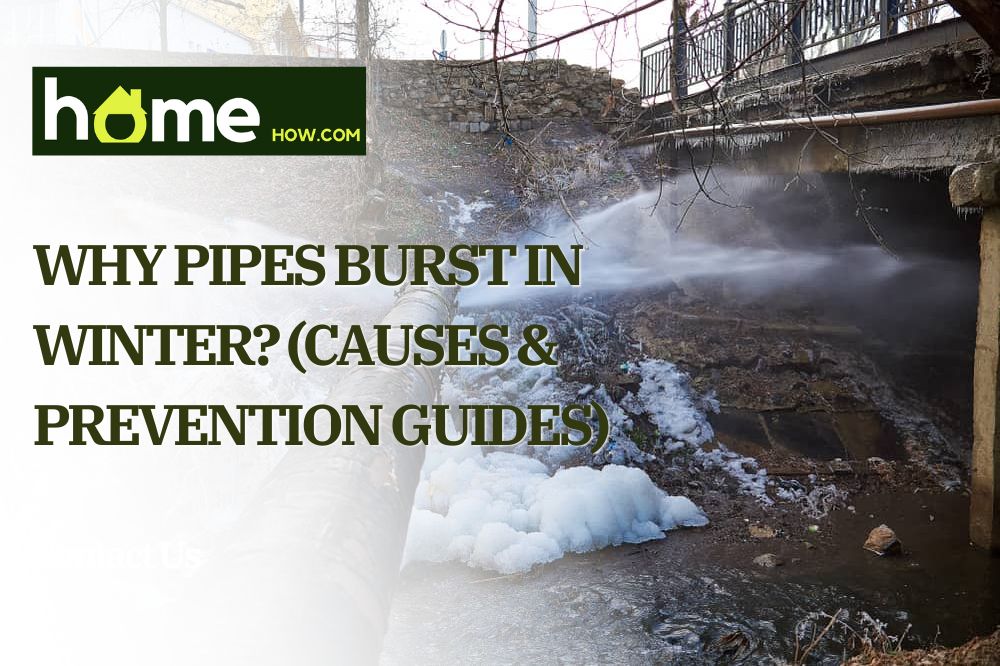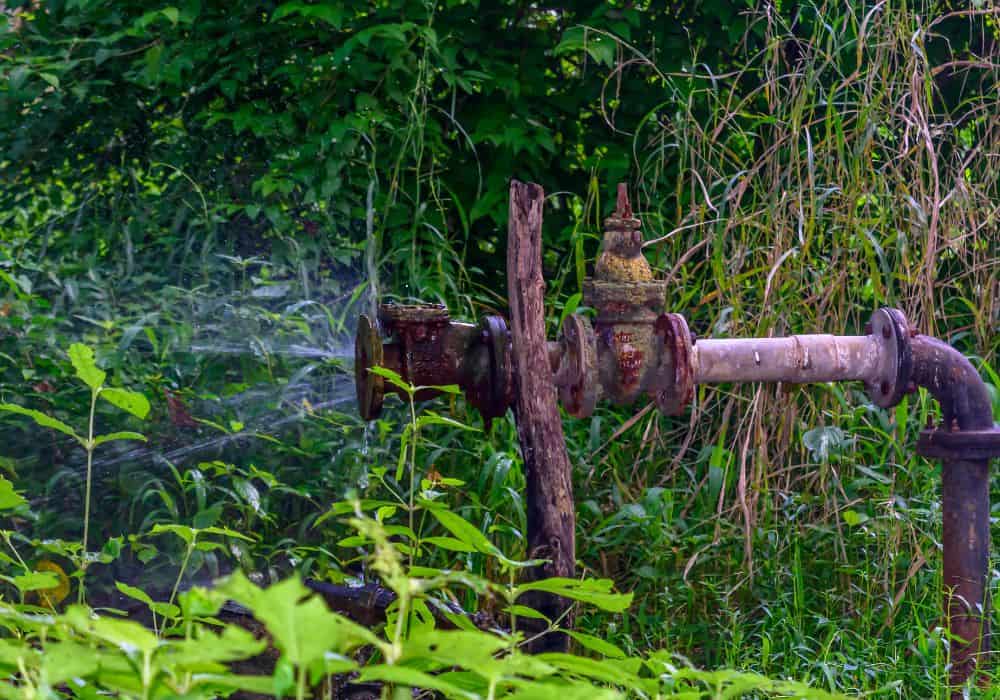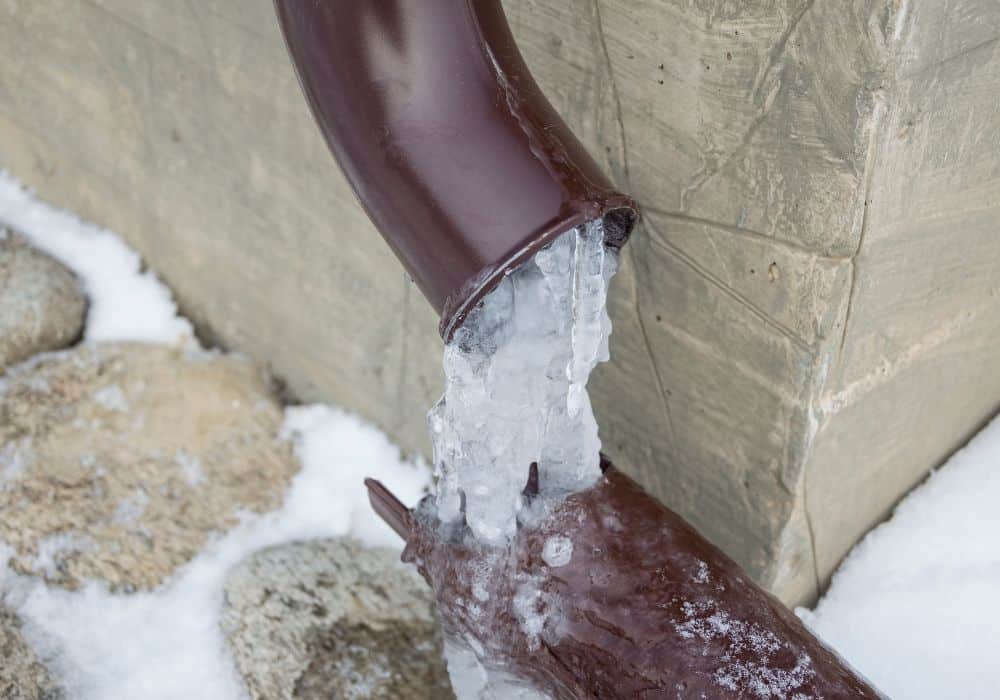Winter is often a time of family and celebration. But there’s one catch. It’s also a time of year when our plumbing is most vulnerable.
A drop in temperature can reduce our pipe’s structural robustness, leading to significant damage – including cracks, fractures, disconnection, and, worst of all, bursting. And as you may know, a burst pipe can cause severe damage.
In this article, we’ll go through why a pipe bursts in winter. We’ll explain what causes them to crack under these conditions, their relationship with frozen water, and how cold affects different pipe materials. We’ll also share tips for protecting them from the upcoming cold season.
How and why does water freeze?
Water will freeze when temperatures lower to 32°F (0°C). At this point, water molecules will slow down and “hook” onto each other, expanding and gradually forming solid crystals, i.e., ice
This freezing process can be a nightmare for outdoor pipes buried underground. Over time, as the water freezes, expands, thaws, and freezes over again, this puts incredible stress on a pipe’s structural integrity.
Because of home heating and insulation, pipes inside our homes often have additional defenses against temperature drops. But vulnerable cold areas, such as the basement and attic, can still suffer from freezing pipes that burst during wintertime.
How long does it take for freezing to burst a pipe?
There is no exact science or time frame for when frozen pipes burst in winter. That’s because it depends on several factors, such as the quantity of water, type of pipe, exact temperature, and how long the freezing point lasts.
Many professionals state that it can happen anywhere from four to six hours. The more insulation and protection you give your water pipes, the slower and longer the freezing must last to cause any significant damage.
Signs of frozen pipes
Below are the most common signs that pipes in your plumbing network have frozen.
- Little to no water or a dramatic reduction in water pressure despite taps being turned on suggests there are blocks of ice tampering with water flow.
- Bulging pipes in obscure places may have stretched after ice expansion
- Noisy pipes may incident floating pieces of ice traveling through your plumbing
- Foul odors may be a result of submerged sewage pipes rupturing.
- Condensation on pipes may result from cold moisture escaping through a leak.
How to prevent winter weather bursting pipes

You are not defenseless to cold temperatures. There are some things you can try to protect pipes and insulate them effectively. These include:
1. Keep water running
Moving water can cause just enough friction to prevent water molecules from hooking up together. This, in turn, prevents the entire line from freezing, as water cannot gather in puddles in the pipes.
Don’t be worried about rising water bills either, as you don’t have to leave taps gushing. Leave sinks running gently overnight. Even a tiny drip can be enough to prevent ice from forming freely in your pipes.
2. Warm air at pipes
Pipes near the exterior of your house or beside doors and windows are most susceptible to freezing because your central heating won’t reach them when needed most.
You can solve this by applying warm air directly at your home’s vulnerable pipes, e.g., in crawl spaces, basements, garages, and attics. Something as small as a space heater or hair dryer can warm piping material up to thaw ice and keep water warm.
3. Heat tape
Also known as heat cable, heat tape can be an effective way of thawing piping parts. Wrap these around the section of pipe most in need of heat and power. Many have an adjustable thermostat that you can use to increase heat during icy spells.
That said, be careful of the continued use of heat tape on specific pipe types like plastics, as too much-concentrated heat in one area can cause structural damage.
4. Plug gaps
Drafts are the bane of everyone homeowner come wintertime. Not only do they bring cold air in, but heat escapes too. But drafts can especially be determinantal to your pipes.
With more cold air entering rooms, your heating system’s effect on keeping pipes warm reduces. To counter this, ensure you make the necessary repairs on cracks, holes, and gaps outside walls, especially in drafty rooms like garages.
Also, pay attention to external vent pipes, like dryer vents. Ensure adequate sealing around these entry points so that gusts of cold wind stay outside!
5. Insulation
Many homes are already insulated to maximize heat retention and keep cold air outside. And while you might expect insulation to only be helpful between our walls, you can also insulate your pipes for additional protection against the winter elements.
Especially if you have many exposed pipes far away from radiators or the cold winter weather is set to continue for some time, insulating pipes can be well worth your time. Use material like fiberglass, which is cheap, lightweight, and effective and can provide long-term, often permanent protection against cold temperatures.
6. Waterproof your insulation
An often-forgotten part of insulating pipes is securing them with waterproof materials. This is especially important for underground pipes, where applying heat can be hard to do.
A simple way of waterproofing pipe insulation is carefully wrapping the insulation in a layer of plastic, creating a complete seal with no holes or openings.
7. High-clay soils to further insulate
For both underground and shallow pipes, different soils have different insulating properties. For example, soils with high clay content have better-insulating properties. Sand is a popular choice to compact around pipes, helping them to retain as much heat as possible and preventing permafrost from impacting piping.
8. Turn the dial
Sometimes, your pipes may be just beside your central heating, but they freeze up and burst. Understandable, this can come as quite a shock.
But if you don’t have enough heat throughout your home, it is an unreliable way of preventing pipes from bursting during winter. Turning the dial on your thermostat will ensure that pipes receive all the necessary heat and keep you comfortable. If there’s a freezing forecast, you may readjust the timing of your central heating to come on earlier in the morning and stay on longer at night.
9. Disconnect accessories
Because frost and ice can cause pipes to contract and expand, any accessories that are attached to pipes or faucets may, in fact, cause a rupture. This includes garden hoses, nozzles, and sprinklers. Especially if these are made of plastic, disconnect them before winter to protect them from freezing water.
Prevent damage to anything connected to your water supply that is not necessary, such as the garden hose, drain, or sprinkler.
10. Keep gutters and vent pipes clear
Any sort of blockage is detrimental to pipes, especially during the winter time. This is because debris like leaves, branches, tissue, and sewage can limit the amount of water traveling through the pipes, causing a buildup.
During winter, this additional water left in your pipes will surely freeze, expand and cause even greater damage than before. Debris, like leaves or branches gathering across gutters and at the bottom of drains, cause backflow problems. To prevent this from happening, regularly clear both the internal spaces of your pipes and the exit points.
11. Weather forecasts
Knowing when to act and how long the winter weather is here to stay can help you form an effective defense against cold snaps. For this reason, pay close attention to weather forecasts, including how the temperature changes throughout the day. This allows you to adjust your thermostat accordingly.
12. Additional help
There is only so much you can do – and even then, a forgotten pipe in an obscure place can burst unexpectedly. Do not admit defeat just yet – but do consult a qualified 0plumber.
Plumbers will be able to inspect your piping system thoroughly, uncover any vulnerable pipes, and give you tailored advice on how best to equip your pipes ahead of time.
Conclusion
Many homeowners have mixed feelings about the wintertime. Although it’s fun and festive, the sudden drop in temperature can play absolute havoc with your plumbing system. And even though spring is right around the corner, the damage from burst pipes because of freezing water can be long-lasting.
Therefore, preparing yourself and your plumbing is vital to enjoying yourself this coming winter. Although the drop in temperature is unavoidable, that doesn’t mean you’re completely defenseless.
In this article, we’ve explained why pipes burst and suggested ways to give them a fighting chance of staying intact. If you have your cold weather tips or questions about burst pipes in winter, please share them in the comments below.
If in doubt, remember:
- When water freezes, it expands. This causes structural damage to pipes over time.
- Simple things like leaving a faucet on or directing heat toward your vulnerable pipes can prevent freezing
- Insulation can provide life-long protection against the cold to pipes.


